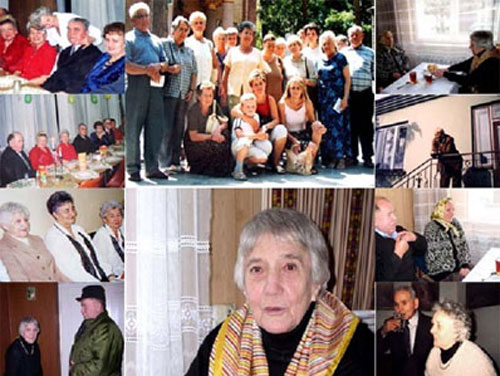SENIOR CLUB

Retired people giving helping-hand to old, sick or disabled pensioners.
Key Innovation
The Senior’s Club provides a space for making new social contacts and sharing experiences and memories.
Problematic background and context
Zandrijk is a new housing estate in Eindhoven, located on the former army air base “Welschap”. As many new housing estates, it suffers for lack of liveliness, facilities and ambience. It still is a kind of building excavation. The old army barracks covered with graffiti, now being used as among others a skate bowl, contrast with the dull terrace houses of the new district. The realization of the facilities like super markets, community buildings, sports centres etc. is postponed for another five years. Since everyone is new in this neighbourhood and no one knows each other, a small group of elderly took the initiative to set up a platform where elderly can meet and socialize.
Solution description
The Senior’s Club is an initiative founded by a small group of elderly which provides facilities and aims to stimulate social contact between unemployed and pensioned elderly. They can come there to have a drink, do games and crafting, but also just to talk. The Senior’s Club can reduce loneliness among elderly in this particular new housing estate. Important is the fact that nothing is obligatory, but almost everyone contributes something in his/her own way. It all started with collecting furniture and materials and finding a suitable location, ending up with three class rooms located in a primary school. They combined two of these rooms by breaking out a wall, creating a cosy place, which is open on Tuesday and Thursday afternoons. The elderly run the club themselves; they keep the facility clean, wash the dishes, do shopping and they also take turns in bar shifts. This keeps the prices low and the feeling of responsibility high. Therefore there’s no need to pay membership fee.
Timeframe
Since february 2004
Development phase
Diffusion:
Comparable solutions are found throughout the Netherlands, but also abroad. However, this solution is quite unique because most others are not founded by the target group themselves, but instead by old people’s homes for example.
Maturity:
This solution has been tested for almost a year now, the users and organisers are satisfied. Because the district is still growing and not totally occupied yet, the Senior’s Club will grow in the future. This might require a larger location and more facilities.
Revenue/costs model
Participants pay around 50 cents for consumptions. The small profit on these consumptions, is used for for example free Christmas lunches. Participants maintain the location and facilities themselves by turns. The furniture is collected in the neighbourhood. Access is free, there’s no membership fee. Energy, water and space are funded by municipality.
Social evaluation
Seniors running their own club gets people involved with each other and gain a sense of responsibility. The individual advantages are: entertainment, build new social contacts, opportunity to stay active and to perceive themselves as useful. The social advantage is that the contact between people in the neighbourhood is established and maintained, creating the base for more social contact and more ambiance in the new housing estate. Although this program was originally only for pensioned elderly, exceptions are made for e.g. persons incapable of work.
Environmental evaluation
There are no direct advantages or disadvantages for the environment.
Economical evaluation
The Senior Club allows elderly to start and maintain their social contacts in a very economic way. Drinks can be bought against cost price and there’s no membership fee to be paid, allowing elderly living of a small pension to join in too, excluding no one.
Authors
Dominika Konieczkowska, Magdalena Misaczek / Academy of Arts in Cracov / Poland